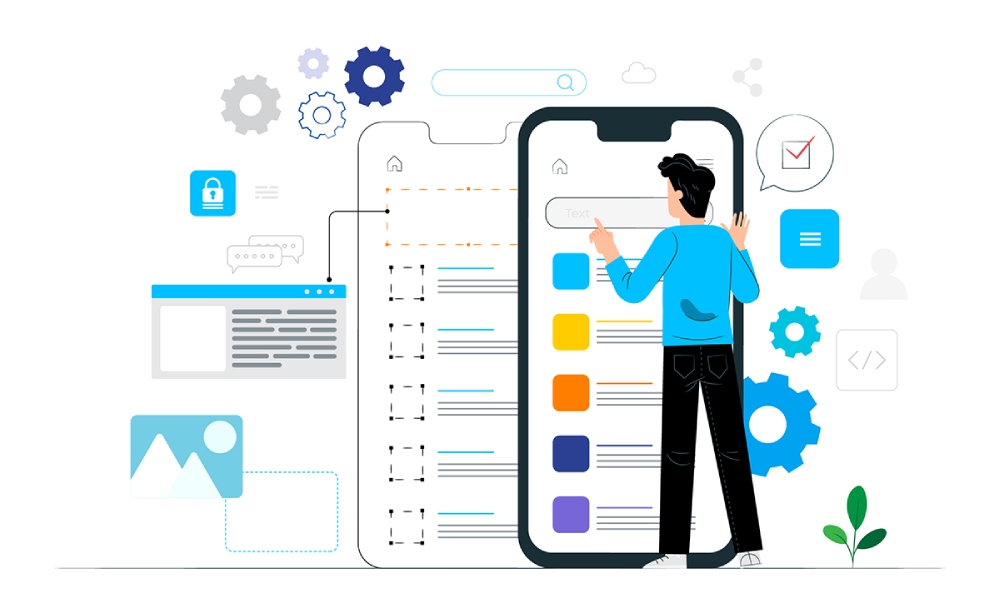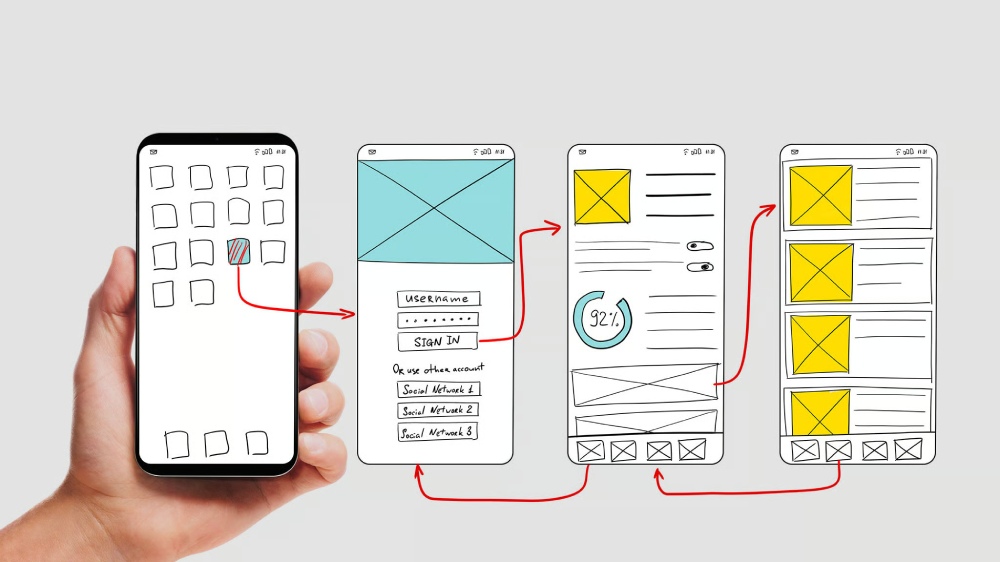
What is enterprise app development? Definition, strategy, execution & innovation
In today’s era of rapid digital transformation, enterprises are seeking smarter, faster, and more connected ways to operate. One key driver behind this evolution is enterprise app development. This form of software development focuses on building scalable, secure, and integrated applications designed to meet the complex needs of modern organizations.
This guide from PowerGate Software explores what enterprise app development is, its advantages and challenges, how to approach building such apps, and why low-code solutions are gaining ground in the enterprise landscape.
1. What is enterprise app development?
Enterprise app development is the process of creating software applications that address the specific needs of a business rather than those of individual consumers. These applications aim to solve complex challenges like managing workflows, storing and analyzing large volumes of data, facilitating real-time communication, or automating repetitive tasks. While enterprise apps encompass a wide range of solutions, the development of enterprise mobile apps has become particularly critical, extending business functionality to employees and partners wherever they are.
You can take a look at the comparison of enterprise and customer apps:
- Consumer apps primarily focus on individual users and often prioritize aesthetic design, viral appeal, and convenience for a broad audience.
- Enterprise apps prioritize functionality, robust integration with internal systems, data control, and business process optimization. Security, strict governance, and regulatory compliance play a far more central role in enterprise environments due to the sensitive nature of business data.
Three main types of enterprise apps target the three levels of an organization’s needs:
- Employee level: These apps usually have the narrowest field of operations, since they are required on a smaller scale. This mainly consists of task-oriented applications that are designed to help field employees solve a particular problem. They are highly beneficial in ensuring employee efficiency and can assist with timely project completion.
- Departmental level: Department-level enterprise mobile apps are useful at boosting the functionality and productivity of a particular business department. For example, an app development company can design a mobile app, especially for your company’s Human Resource Management department. These apps are designed on a larger scale and are usually equipped with more features to meet the greater level of demand.
- Company level: Company-level app developments are meant for use at the larger organizational level. They are highly useful in building team rapport and allowing different sectors of a business to communicate common goals and collaborate on shared projects. These apps are ideal for enabling seamless connection of the executives with the employees, targeting business hierarchies, and promoting communication across all work levels.
2. 5 key characteristics of enterprise app development
1 – Business-oriented functionality: Enterprise apps solve real business problems. Common use cases include customer relationship management (CRM), enterprise resource planning (ERP), internal communication tools, HR systems, and supply chain management. Many of these solutions now have powerful mobile counterparts.
2 – Scalability and security: These apps must scale alongside a growing business while maintaining the highest levels of security and compliance, protecting sensitive corporate data.
3 – Integration with existing systems: Enterprise apps often need to work seamlessly with existing IT infrastructure, such as databases, legacy systems, and third-party platforms, to ensure a unified data ecosystem.
4 – Robustness and reliability: Downtime can cost millions in enterprise environments. Hence, reliability, high availability, and consistent performance are non-negotiable.
5 – User experience (UX) for productivity: While aesthetics are important, enterprise apps prioritize intuitive design and efficient workflows to maximize employee productivity and minimize training time.

User experience (UX) for productivity is one of the key characteristics of enterprise app development – Source: craftedny.com
2. Benefits and challenges of enterprise apps
Implementing enterprise applications offers significant advantages but also comes with its unique set of challenges.
2.1. The benefits
The benefits of enterprise apps:
- Improved data management and sharing: Enterprise applications allow seamless data sharing and collaboration across departments. With centralized access to accurate, real-time data, teams can make better-informed decisions and avoid redundancies, fostering a more unified organizational view.
- Streamlined internal processes: Custom applications help automate and simplify routine business processes. Whether it’s automating approval workflows, managing complex project tasks, or generating detailed reports, enterprise apps save significant time and drastically reduce human error.
- Enhanced user adoption and accessibility: Not all employees are technically inclined. Enterprise apps simplify the use of modern technology through intuitive design and guided interfaces, ensuring greater tech adoption across the workforce and minimizing disruption to daily operations. Enterprise mobile apps specifically boost accessibility by bringing critical functions directly to users’ devices.
- Identifying new market opportunities: By consolidating and analyzing real-time data from various business functions, enterprise applications can help identify emerging trends, customer behavior patterns, and untapped market segments, thereby unlocking new revenue opportunities.
- Enhanced efficiency across the board: These applications drastically reduce time spent on manual tasks, improve communication and collaboration across departments, and enable smarter workflows, leading to measurable gains in overall organizational efficiency and productivity.
>>> PowerGate Software delivers personalized, cloud-based enterprise solutions that maximize ROI and drive meaningful business outcomes.
2.2. The challenges
The challenges of enterprise apps:
- Changing business requirements: A business landscape is ever-changing, sometimes without warning. This is why it’s extremely important to make sure company policies and strategies are always flexible.
- Ensuring a return on your investment: Most businesses shy away from hiring enterprise application development services because they fear they might not get a return on their investment. But with PowerGate, you can put your worries aside.
- Employee engagement: Integrating enterprise applications into your business processes is bound to be beneficial, but only if your employees are on board with these changes. After all, they are the ones who will be making the greatest use of the software, so make sure you properly introduce such large-scale changes to your employees and train them to capitalize on the high-tech software for the best possible results. When done right, you will be giving your employees a tool that will make their work easier and benefit your business in the long run.

Implementing enterprise applications offers significant advantages but also comes with its unique set of challenges – Source: enlivendc.com
3. How do I develop an enterprise app?
Developing an enterprise application, especially a mobile one, requires a structured and strategic approach.
3.1. Understanding the “Why”
Before any code is written, it’s crucial to define the core purpose of the app.
- Problem identification: What specific business challenge or pain point will the app address? (e.g., inefficient manual inventory tracking, poor field communication, disjointed customer data).
- Goal setting: Define clear, measurable KPIs for the app’s success. E.g., reduced processing time by X%, increased customer satisfaction by Y%, lower operational costs by Z%.
- User profiling: Identify your internal users (e.g., sales reps, field technicians, HR staff, executives) and external users (e.g., partners, specific customers). Understand their day-to-day tasks, workflows, technical proficiency, and specific needs to design an app that truly supports them.
3.2. The development lifecycle
A typical enterprise app development project follows a well-defined lifecycle to ensure quality and alignment with business goals.
Discovery & planning
- In-depth business analysis to gather detailed requirements.
- Technical feasibility study to assess technologies and infrastructure.
- Resource allocation and comprehensive timeline planning.
- Choosing the appropriate tech stack (e.g., Java, .NET for backend; React Native, Swift/Kotlin for mobile frontends).
UI/UX design
- Focus on simplicity, intuitive navigation, and usability, especially for enterprise mobile apps where screen real estate is limited.
- Designing responsive and role-based interfaces that adapt to different devices and user permissions.
- Considering accessibility standards to ensure inclusivity for all users.
Development
- Coding the front-end, back-end, and necessary API integrations.
- Adopting agile methodology for iterative delivery, allowing for continuous feedback and adaptation.
Testing
- Thorough functional testing to ensure all features work as intended.
- Performance testing to verify the app handles expected loads and response times.
- Rigorous security audits and compliance checks to protect sensitive data and meet regulatory requirements.
Deployment
- Strategizing on cloud or on-premises hosting.
- For mobile apps, managing app store deployment (private enterprise stores) or internal enterprise distribution methods.
Maintenance & iteration
- Providing regular updates, bug fixes, and security patches.
- Implementing continuous improvement based on user feedback and evolving business needs.
4. You may need: Why use low-code app development in the enterprise?
In the quest for faster innovation and digital transformation, many enterprises are turning to low-code development platforms.
4.1. What is low-code?
Low-code platforms allow users to build applications using visual interfaces with minimal hand-coding. They typically offer pre-built templates, drag-and-drop builders for UI components, and automated back-end logic, significantly accelerating the development process.

What is low-code – Source: pulpstream.com
4.2. Benefits of low-code in the enterprise
There are 7 benefits of low-code in the enterprise:
- Speed: Drastically reduces development time, enabling enterprises to bring critical applications to market much faster and respond quickly to business changes.
- Cost-effective: Less dependence on highly specialized developers for routine tasks, reducing overall development costs and resource strain.
- Empowers non-developers: Business users (often called “citizen developers”) can actively participate in or even lead the creation of departmental apps, bridging the gap between business needs and IT capabilities.
- Rapid iteration: Facilitates agile updates and rapid iteration based on user feedback, ensuring the app evolves in lockstep with business requirements.
- Reduced technical debt: Many low-code platforms enforce best practices and use standardized components, leading to cleaner code and easier maintenance.
- Improved collaboration: Low-code platforms often feature collaborative environments that foster better communication between business stakeholders and IT teams.
- Enhanced innovation: By automating routine development tasks, IT teams can focus on more complex, strategic, and innovative projects.
4.3. Ideal use cases for low-code in enterprise
- Internal dashboards and reporting tools.
- Workflow automation and process optimization applications.
- Rapid prototyping and MVP development.
- Department-specific applications (e.g., HR onboarding, expense reporting, simple CRM extensions).
- Extending or modernizing existing legacy systems with new user interfaces or functionalities.
4.4. When to avoid low-code?
Low-code might not be the best fit for:
- Highly complex, performance-intensive applications that require granular control over every aspect of the code
- Applications demanding deep customization at the operating system level or intricate hardware-level integration
Enterprise app development is a necessity for businesses that want to remain competitive, efficient, and adaptive in today’s fast-paced digital economy. From enhancing internal operations and improving employee productivity to delivering real-time insights and empowering a mobile workforce, these applications shape how modern enterprises function and innovate.
Whether you’re starting from scratch to build a new enterprise application or seeking to modernize legacy systems, PowerGate Software brings the experience, technical depth, and global delivery capabilities to turn your vision into scalable, secure, and user-friendly enterprise solutions. We understand how to develop an enterprise mobile app that aligns with your unique business goals and leverages the best of modern technology, including how low-code app development in the enterprise can provide a significant advantage.
Ready to build your enterprise application? Refer to PowerGate’s enterprise software development services to bring your innovative ideas to life!
At PowerGate Software, a global product studio with extensive experience in enterprise software development, we help companies harness the full power of custom digital solutions. From large-scale enterprise resource planning systems to efficient field service mobile apps, we deliver reliable, user-friendly applications tailored to our clients’ unique business environments.

